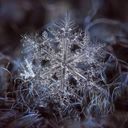
Urticaria (hives) is a vascular reaction of the skin marked by the transient appearance of smooth, slightly elevated papules or plaques (wheals) that are erythematous and that are often attended by severe pruritus. Individual lesions resolve without scarring in several hours. Most cases of urticaria are self-limited and of short duration; the eruption rarely lasts more than several days, it but may be recurrent over weeks
Cats shed skin flakes and deposit them in their fur when they groom. This is dander. Allergy-causing proteins in the dander can provoke reactions including hives.
The allergy-causing substance is in the dander, not the fur. Dander is made of airborne saliva and urine-derived proteins. Licking transfers the dander, along with saliva and urine, to the cat's fur. But dander can remain suspended in house dust for a long time, hence an allergic reaction can occur even if the cat has been removed. Cat dander also sticks walls, furnishings, carpets, bedding and clothes. Completely eliminating cat dander may take two to five years.
Wheezing and red, itchy eyes are the most easily recognized symptoms associated with a cat allergy. Contact hives, characterized by red, itchy welts, can develop when an allergic person touches cat fur or when the cat licks or scratches the person. Perennial allergic rhinitis occurs when nasal passages become inflamed as a result of inhaling cat dander. Symptoms include persistent runny or stuffy nose, red or watery eyes and postnasal drip. Chronic, severe, unstable asthma and worsening eczema are among additional symptoms.
Yes. Pretty much anything can cause urticaria. Even water, for that matter. There are very few cases of aquagenic urticaria which has no specific treatment as of now.



